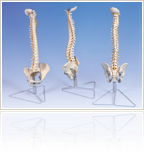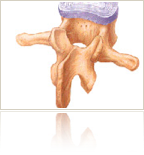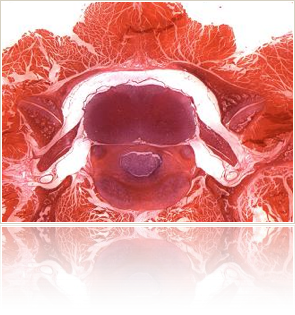




Intervertebral disc degeneration and eventual disc herniation are relatively common and serious problems. As the nucleus pulposus dries out the annulus fibrosus begins to tear, and problems become even more likely. The current ways of dealing with these problems include surgeries or artificial implants. The outcomes of these solutions are less than ideal, resulting in unnatural spine mechanics and eventual disc degeneration at other sites. The current treatments for these conditions attempt to cover up the symptoms instead of actually solving the problem.
Tissue engineered intervertebral discs can be used instead of the current treatments to create a natural way of actually correcting the problems. Although there are many gaps and much research still to be done in this area, the general procedure involves isolating, most likely, MSCs and differentiating them into the desired chondrocyte-like cells. Then, these cells can be placed onto a degradable and biocompatible scaffold most likely made of PLGA. This will form the cells into a coherent tissue. From there, the construct can be implanted and incorporated into the body. It has been shown that all of these steps can be performed independently with great success. If these method can be put together, it will result in a far superior form of treatment compared to the current spinal fusion and artificial disc methods being used. It will actually correct the problem, and the patient live a normal, healthy life.






Conclusion

To the last section
To the previous section




